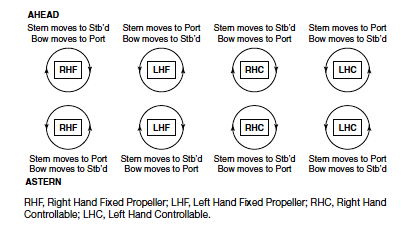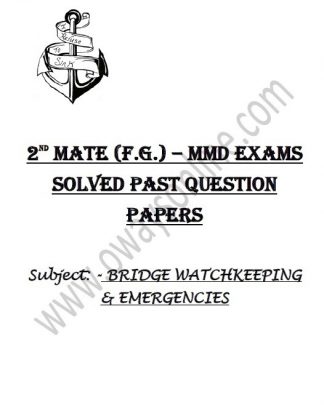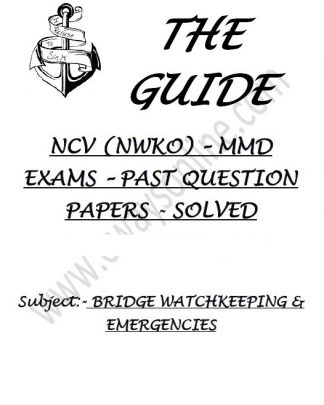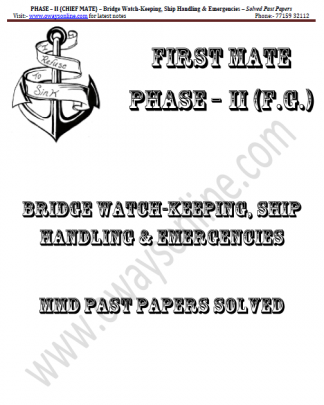Transverse Thrust:

- Transverse thrust is the tendency for a forward or astern running propeller to move the stern to starboard or port. Transverse thrust is caused by interaction between the hull, propeller and rudder. The effect of transverse thrust is a slight tendency for the bow to swing to port on a ship with a right-handed propeller turning ahead.
- Transverse thrust is more pronounced when propellers are moving astern.
- When moving astern, transverse thrust is caused by water passing through the astern-moving propeller creating high pressure on the starboard quarter of the hull, which produces a force that pushes the ship’s stern to port. Rudder angle can influence the magnitude of this force.
- The Ship Handler should be aware of the variable effect of transverse thrust. As water flow over a ship’s hull changes, so does transverse thrust. The difference is most noticeable in shallow water. For example, a ship that turns to starboard in deep water may well turn to port in shallow water. Also, the magnitude of the force will change and, by implication, there will be a range of water depths for which the bias may be difficult to predict, something that is especially true when a ship is stopping in water of reducing depth.
- Transverse thrust is often used to help bring the ship’s stern alongside during berthing. When a propeller is put astern on a ship moving forward at speed, the initial effect of transverse thrust is slight. However, as the ship’s forward motion decreases, the effect of transverse thrust increases.
- It is essential for a Ship Handler to understand just how much effect transverse thrust has on his particular ship.


